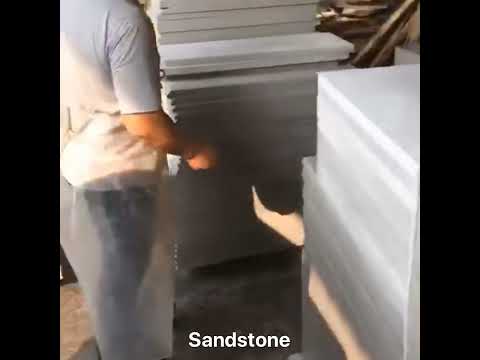Red Sandstone Sculpture
Red Sandstone Sculpture
This expertly crafted Red Sandstone Sculpture is a stunning addition to any home or outdoor space. Made from high-quality sandstone, this sculpture boasts a unique red hue and intricate details. The perfect blend of beauty and durability, it is sure to impress for years to come.
| Feature | Details |
|---|---|
| Material | Natural Sandstone |
| Surface Finished | Honed, Flamed, Bush-hammered, Nature, Mushroom, Swan etc |
| Finished Products | Floor tiles, Wall cladding, Countertops, Windowsills, Special-shaped tiles, Small slabs, Swimming pool, Steps, Wall panel, Flooring, Veneers, Slabs, Coping tiles, etc |
| Color | Yellow, Black, White, Red,Purple Wood, green,Grey,Rainbow etc |
| Size | Customized Pls contact us for the newest catalog of sandstone |
| Product Choice | Countertop,Table top ,Varity top Fireplace,Tombstone,Memorial,Gravestone,Monument,Slabs, Sanitary, Blocks, Stair Steps, Paving,Columns, Pillars, Sculptures, Fountains, Lanterns, Pots,Lines, Mosaics, Cultural Marbles etc. |
| Conventional Size | 600 x 600mm, 600 x 400mm, 600 x 300mm, 457 x 457mm, 305 x 305mm, 300 x 300mm. |
| Small Slab Size | 60/65 x 180 up x 2 ,70 x 240up x 2, 60/65 x 180up x 3 ,70 x 240up x 3 |
| Thickness Tolerance | +/-0.5mm,+/-1mm,+1/-2mm,+1/-3mm,according to different standard |
| Trade term | FOB,CNF,CIF,etc. |
| Advantage |
1)Rich experience to promise the stone quality. 2)Professional inspector to control the quality. 3)Wholesale price with timely delivery to meet your purchase plans |
Understanding Sandstone and Red Sandstone Sculpture
Red sandstone sculpture is a type of matt stone known for its rough, natural, and luxurious appearance. It does not produce strong reflected light, giving it a unique cultural feel. This widely used stone is prominent in architecture, particularly for interior and exterior curtain wall decoration, reliefs, murals, architectural detail sculptures, and garden sculptures.
What is Sandstone?
Sandstone, also known as sedimentary rock, primarily consists of quartz or feldspar. It forms through the erosion of stone particles by running water, which disintegrates them into sand and deposits them on riverbeds. Over thousands of years, these sediments accumulate, solidify, and undergo compression, cementation, and geophysical processes, eventually forming sandstone.
China has abundant sandstone mineral resources due to its vast territory and complex geological environment, leading to a diverse range of sandstone varieties:
- Sichuan and Yunnan Red Sandstone: Fine-grained, soft in texture, and rich in color, classified as mud sandstone.
- Shandong Sandstone: A sea sandstone with coarser grains, higher hardness, and a more granular structure. Its color is less pure.
- Henan and Hebei Sandstone: Similar to Shandong sandstone but with a less varied color palette.
Sandstone offers several advantages, including sound insulation, moisture absorption, easy cleaning, strong compression resistance, and wear resistance, making it a favorite among architects.
Sandstone in Architecture
A notable example of sandstone in architecture is the China International Design Museum at the China Academy of Art in Hangzhou. Designed by Pritzker Prize-winning Portuguese architect Álvaro Siza, the museum integrates sandstone with off-white marble, preserving the purity of the architectural space.
Challenges and Maintenance
Despite its many benefits, red sandstone sculpture has some drawbacks. Its granular surface results in higher porosity, making it susceptible to freeze-thaw damage in winter when exposed to rain. Like other stone facades, regular inspections and maintenance are necessary to prevent damage from wind and rain over time.
Sandstone remains a preferred choice in architecture and sculpture due to its aesthetic appeal and durability, making it a timeless building material.
Share























